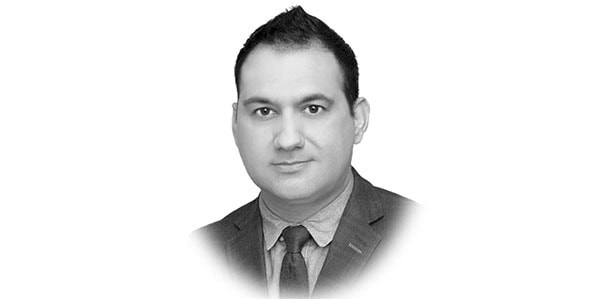Human rights in Sindh is a far cry
SINDH takes pride in its 5000-year-old civilization but it can’t do so in its record of human rights, which in modern times is the barometer of socio-economic conditions.
It looks like there is no focus of the government on human rights for women, children, trans-genders, minorities, workers and weaker sections in the province.
In such conditions, nobody can call one’s soul one’s own. The Human Rights Commission of Pakistan (HRCP) in its report on “State of Human Rights 2020” in Sindh shows there is always a fear of disappearing. Women are stoned, honour-killed or raped and killed.
Young children face sexual abuse and murder. Workers have no job security. Organizations such as civil society and Non-Government Organizations (NGOs) that try to awaken the people to their human rights are persecuted.
The media personnel, which report the common man’s problems of housing, cost of living, lack of medical facilities, education of children, transport and communication, and indifference of the rulers and police, are punished in different ways including murder or murderous attacks on journalists. On the other hand, media workers suffered hardships due to salary cuts.
The violations of human rights are not only in Sindh but in all provinces of Pakistan and its captive terrorists in Kashmir may just be the tip of the iceberg as the HRCP report is mainly confused with incidents of violations reported by newspapers.
A very large number of such cases involving murders, rape and honour killing, especially in rural areas remain unreported.
In Pakistan, it is not very safe for the HRCP to or, for that matter, for investigative journalists to start their own investigation into human rights conditions in Pakistan instead of safely depending on newspaper clippings. However, the HRCP made bold decisions in some cases to carry out a series of fact-finding missions including on the demolition of Hindus’ homes in South Punjab.
The HRCP report does not make any recommendations to the government but expresses consternation at the government’s failure to live up to its responsibility for human rights.
In its long appendix, it expenses its strong views on violation of human rights in Pakistan and its administered Kashmir.
The government has been unable to prevent the enforced disappearances of political and nationalist activists. This crime had intensified during 2020. The Sindh Human Rights Defenders Network had reported 127 persons as missing during the year.
Out of these 112 had surfaced. They included 34 years old Sarang Joyo, an activist of the Sindh Suggi Forum who was actively involved with camps for demanding recovery of missing persons. Nationalist parties and Mohajir Quami Movement (MQM) protested against the disappearance of their active workers. Not all missing persons re-appeared alive.
Bullet riddled bodies of two workers of the MQM and the Jiye Sindh Quami Mahaz (JSQM), who had been missing since 2019, were found in Karachi in June 2020.
The Commission of Inquiry on Enforced Disappearances received 1643 enforced disappearances from Sindh.
Fifty-five of them were found killed and 248 were traced to prisons. By the end of 2020, the Commissions were able to trace 1029 missing persons. The HRCP did not say who was behind the disappearance nor did its report say if it interviewed the traced persons to find out the motive of kidnappers.
Kidnapping of men and women and children increased to 3599 in 2020 from 3285 in 2019. Enforced disappearances are connected with the victim’s political or nationalist beliefs, which militate with the rulers’/establishments philosophy of national security.
Thus all splinter groups like: Jiye Sindh, Sindh Desh Revolutionary Army and Sindhudesh Liberation Army, that conduct their activities in Sindh and Baluchistan, allegedly pose threat to China-Pakistan Economic Corridor (CPEC) as well.
The kidnapping of men and women and children increased to 3599 in 2020 from 3285 in 2019.
The HRCP reported that at least six cases of kidnapping and forced conversion of Hindu girls and their marriage to Muslims were reported.
In the case of abduction of a Christian girl as young as 14-15, the Sindh High Court released the abductor-husband on bail but sent the victim to a government shelter home to stay there till she was 18.
During the year, Muslim girls and women in Sindh suffered sexual assault in hundreds. Reported cases of rape including gang rape were 398. The number of unreported cases, especially in rural areas cannot be counted.
Similarly, the cases of honour-killing cannot be correctly counted. The victims of this crime are women and men.
The HRCP recorded 197 cases including 79 men victims. Among the women, one was stoned to death in Jamshoro district in June. Children were not less sufferers. They faced abduction and violence.
About 3.5 million children were out of school in the province. In Sindh’s capital city, Karachi, housing is a big problem for poor families. They have railway lines and long drains. The Supreme Court wants these encroachments removed. But no resettlement plans have been made yet.
In summation, be it in Sindh province or otherwise, human rights are one of the prime indicators of a country’s social security. The government of Pakistan including provincial governments must consider this important indicator in the loop to improve the social protection of its people beyond the political gimmicks.
—The writer is a political analyst based in Islamabad.










